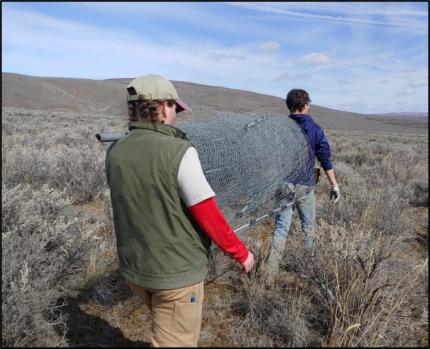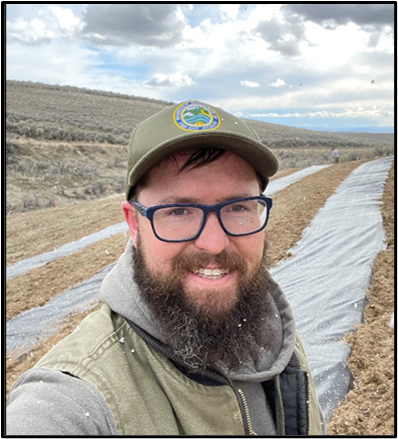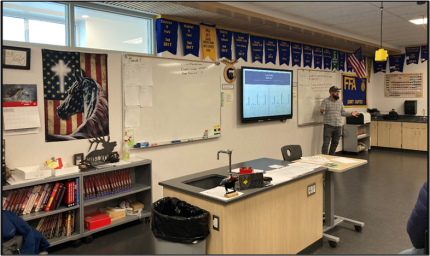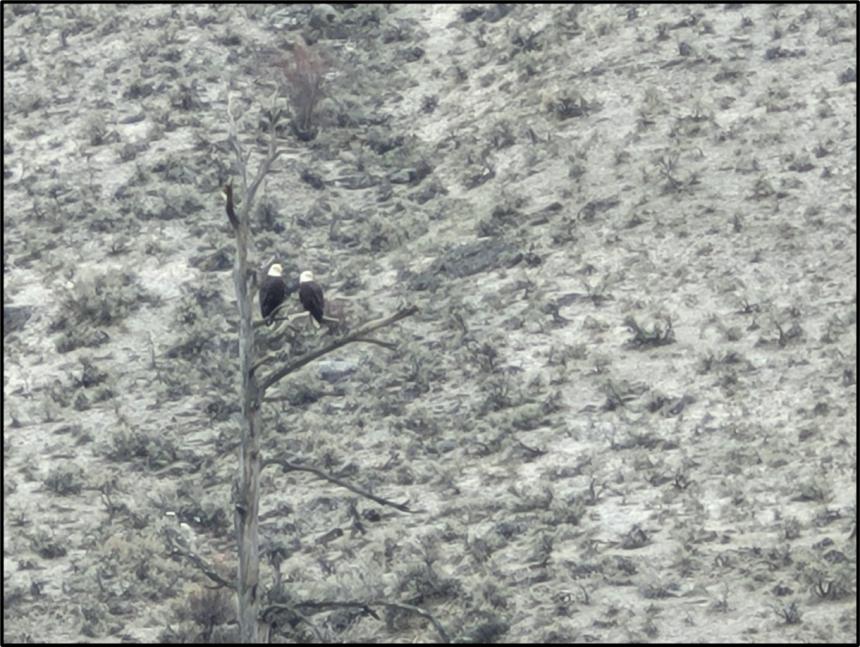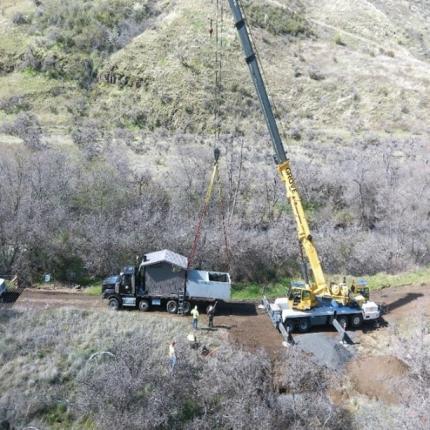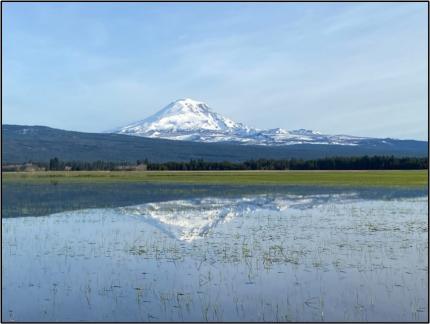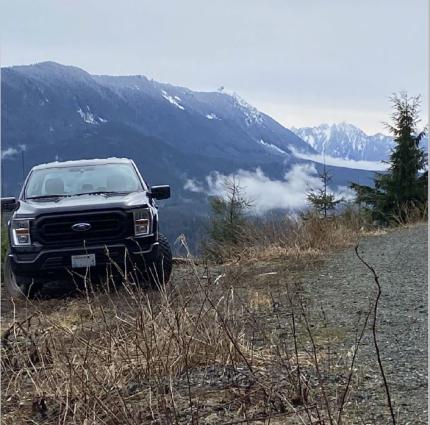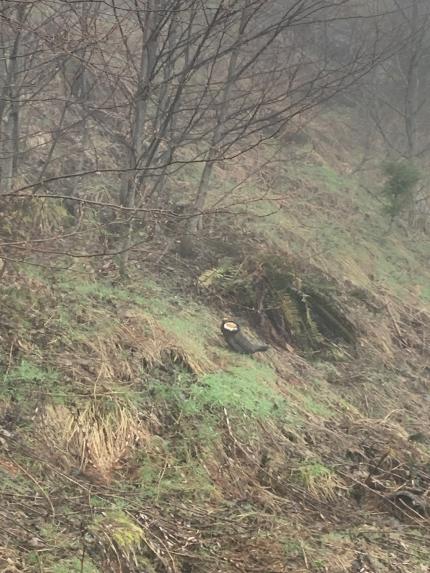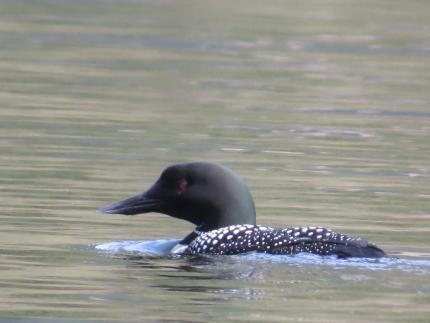Biweekly report Apr16-30 2023 - Region 3 (South Central)
Managing Wildlife Populations
Bighorn Sheep Surveys: WDFW biologist, regional conflict specialists, wildlife area staff, and ungulate specialists teamed up to conduct two mark-resight surveys of bighorn sheep in the Yakima Canyon. Surveys are conducted by visually identifying bighorn sheep and quantifying the number of marked animals (wearing GPS collars) and the total number present. Staff members also collect data on the sex and age composition of observed groups. This survey provides an estimated population size and importantly 2022 lamb recruitment. This data will be utilized for the Test and Remove study that began earlier this year to address concerns of prevalence rates of mycoplasma ovipneumoniae (MOVI).

Bear Density Surveys: Black bear density surveys were approved to be carried out early this summer in District 8. Non-invasive hair snag sites will be set in the region of Oak Creek Wildlife Area and Okanagan-Wenatchee National Forest. This data will provide estimates of bear density locally and improve efforts to understand variation in black bear density statewide. See Washington Department of Fish and Wildlife. 2022. Statewide Black Bear Density Monitoring in Washington: A cross-region and interagency team approach.
White-trailed Jackrabbit Sightings: L. T. Murray staff members saw two white-tailed jackrabbits on the Whiskey Dick Unit. That makes four white-tailed jackrabbits seen on the Whiskey Dick Unit this year. The first was mistaken for a cottontail rabbit and shot by recreators at Whiskey Dick Bay but the remaining three were spotted in April alive and healthy.


District 8 Wolf Activity: Individual wolves, both collared and uncollared, are leaving and arriving in the district at this time. It is suspected that they will remain transient for some time.
Providing Conflict Prevention and Education
Rattlesnake Hills Elk: Wildlife Conflict Specialist Hand had contact with landowners on Rattlesnake Mountain concerning the elk activity, damage occurrence, and damage permit issuance. Summer bull damage prevention permits were developed and will be distributed to landowners in the next couple of weeks. These permits provide hunting opportunity during critical wheat growth development while aiding in hazing elk back to the Hanford National Monument.
Kahlotus Deer: Wildlife Conflict Specialist Hand conducted deer monitoring and damage inspections at a couple of dryland wheat farms in Game Management Unit (GMU) 381. Very few deer were observed, and damage impacts appear to be reducing.
Kittitas County Wildlife Conflict: Conflict Specialist Wetzel worked with several hay growers who were having problems with elk in crops. Elk were hazed from irrigated hay, row crops, and at haystacks. One elk near a garlic field died from pneumonia complications.
Yakima County Wildlife Conflict: Conflict Wetzel worked with several hay growers who were having problems with elk in crops. Elk have been hazed from irrigated hay, row crops, and orchard areas. One elk near an irrigated field died from unknown causes.
Fence repairs are underway in West Valley. It is likely winter snow caused the elk fence to fall over in that area. Repairs were also needed at un-permitted entry points that adjacent landowners have cut into the elk fence.



Conserving Natural Landscapes
L. T. Murray Pedestrian Surveys: The L. T. Murray staff members, Off-road Vehicle Education Specialist Schrauth, and state foresters assisted a cultural resource specialist with pedestrian surveys within the 2022 Vantage Highway Fire footprint. Among the lithic scatter found was an arrowhead which is believed to be between 200 and 2,000 years old. The arrowhead was documented and reburied at the site. A few hundred acres have now been surveyed and will be available for planting this fall.

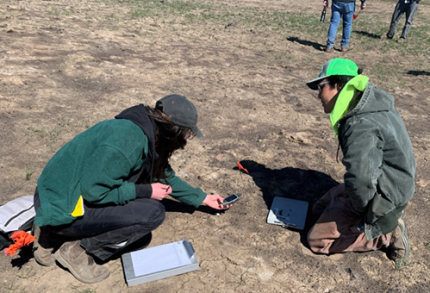

Petrified Wood: While crossing state parks through the Recreation Drive access point, L. T. Murray staff members found six bags of petrified wood in the road. Assistant Manager Winegeart contacted a very grateful John Ernster with State Parks who requested Winegeart fill out a witness statement and then had State Parks enforcement investigate and file a criminal report.

L. T. Murray Grazing: Wildlife Area Manager Morrison and Assistant Manager Winegeart performed pre-grazing monitoring in the Lower Parke pasture of the Quilomene Unit’s grazing lease.
Providing Education and Outreach
Back Country Hunters and Anglers: Assistant Manager Winegeart met with the president of the local chapter for Back Country Hunters and Anglers and discussed upcoming volunteer opportunities on the L. T. Murray Wildlife Area.
Stuck Vehicle in Wenas: Off-road Vehicle Education Specialist Schrauth came across a stuck off-road vehicle while on patrol in the Wenas Wildlife Area and assisted with the removal of the vehicle. Education was also provided on proper use of the Green Dot Road system as well as proper recovery equipment, communication standards, and recovery efforts safety.

Sunnyside and Snake River: Assistant Manager Jahns and Natural Resource Technician Manderbach had the pleasure of participating in the 25th annual Salmon Summit at Columbia Park. Thousands of elementary students from the Tri-Cities and surrounding areas released their classroom salmon into the Columbia River and rotated through stations to learn more about fish, wildlife, and natural resources in Washington. WDFW’s “Pelts & Skulls” station was a huge hit with the kids. They learned about the importance of wildlife habitat, native fish, and wildlife species during the interactive, hands-on lesson. Thank you, Communication Manager Lehman and Customer Service Specialist Tucker for helping at the booth as well.


Natural Resource Technician Manderbach and Habitat Biologist Maikis attended a career night at Leona Libby Middle School in West Richland. They were able to teach students and community members about fish and wildlife in Washington and potential career opportunities with WDFW.

Other
Sunnyside and Snake River: Manager Kaelber, Assistant Manager Ferguson, and Natural Resource Technician Manderbach spent a day cleaning up litter at the Sunnyside Headquarters Unit. Two dump trailers were filled with garbage, tires, and furniture.

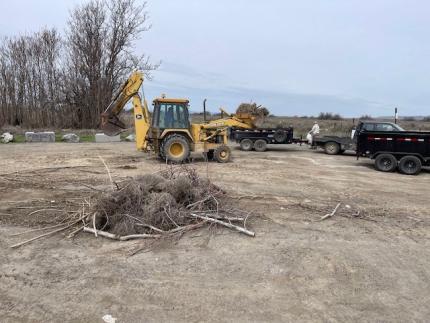

Jahns and Manderbach cleared beaver debris from a waterway in the Hope Valley Unit to alleviate flooding on neighboring private property. They also cleared beaver debris from a water control structure in the Mesa Lake Unit.
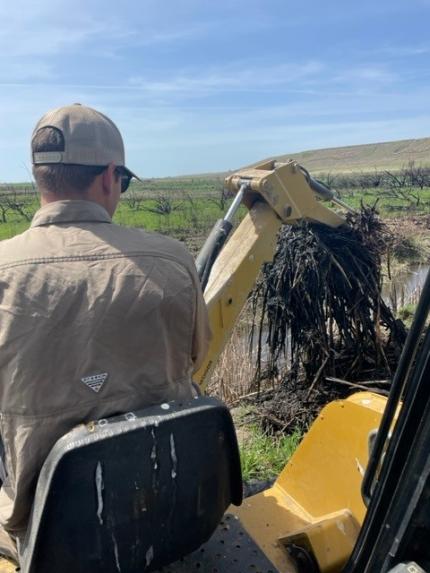


Conflict Specialist Wetzel assisted Washington Department of Transportation and Washington State Patrol to haze elk from several areas near I-90. Multiple stranded or nuisance beaver calls were handled in Yakima and Kittitas counties.
















